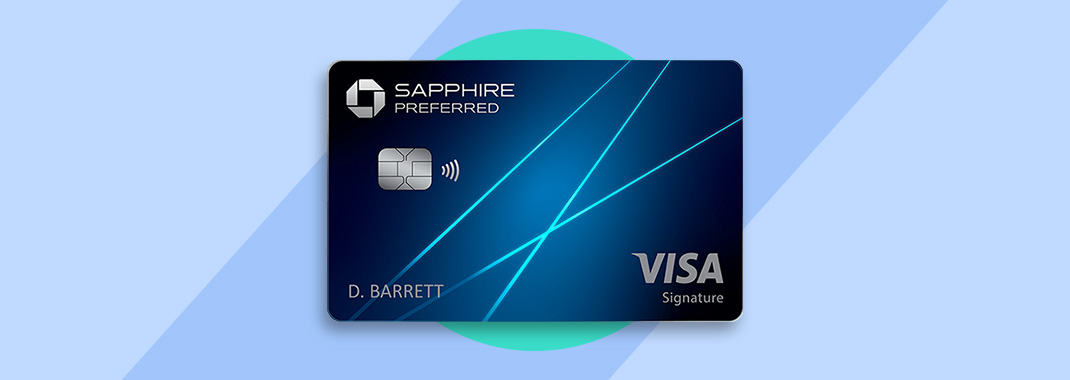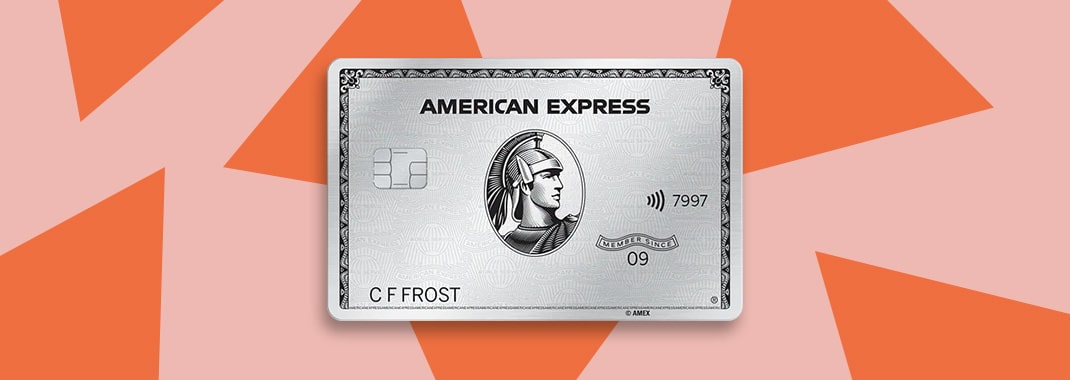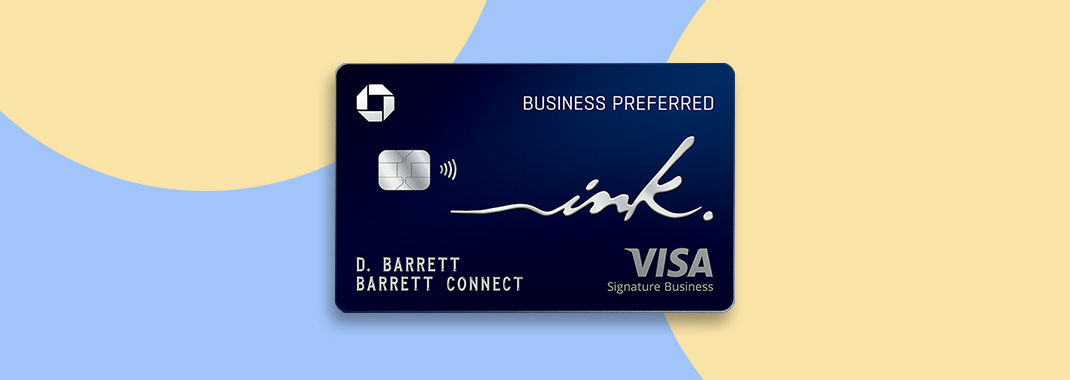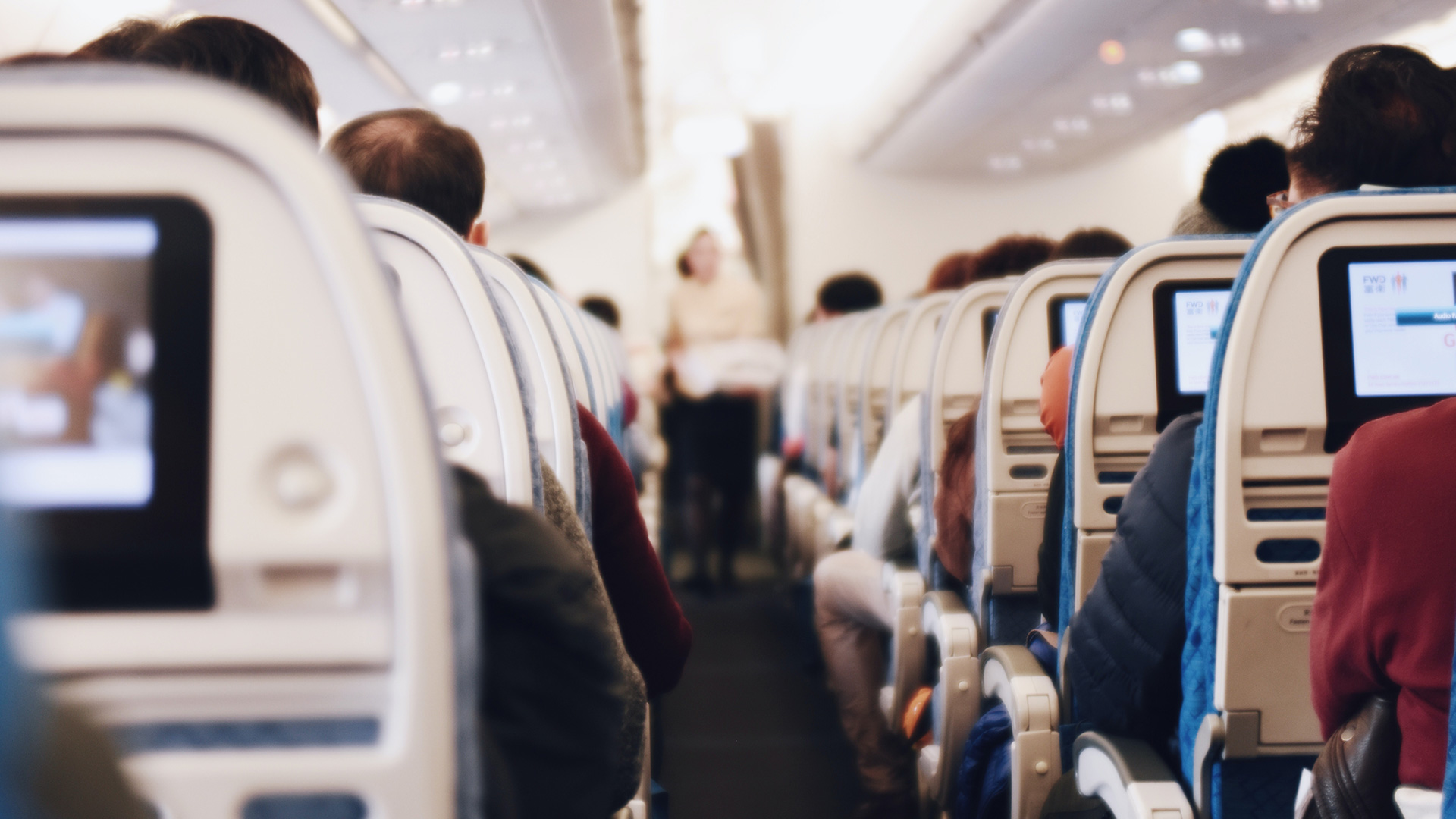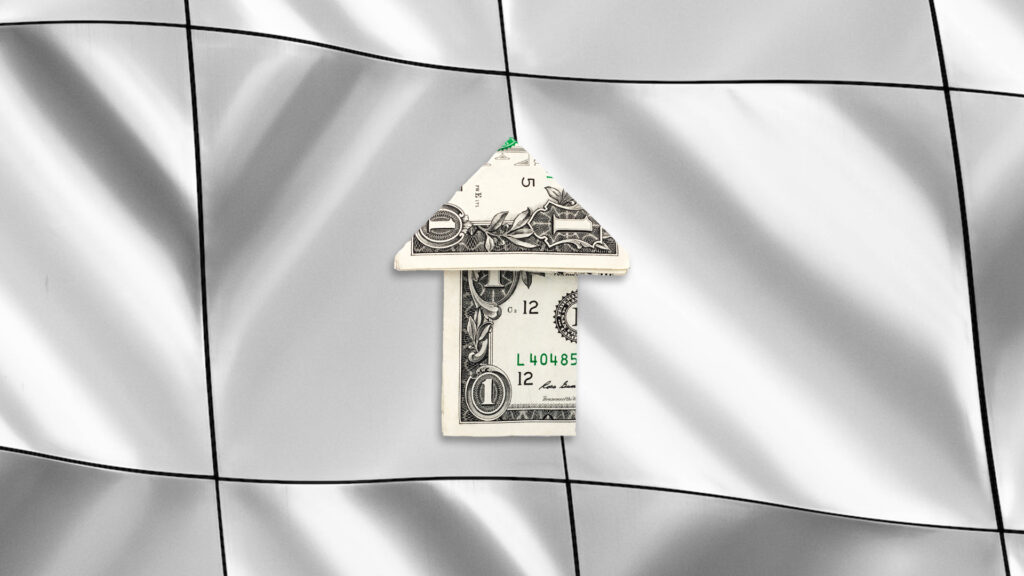Most products on this page are from partners who may compensate us. This may influence which products we write about and where and how they appear on the page. However, opinions expressed here are the author's alone, not those of any bank, credit card issuer, airline or hotel chain. This page may include information about American Express products currently unavailable on Slickdeals. American Express is not a partner of Slickdeals.
Chase Sapphire Reserve® Card
- Our Rating 4.5/5 How our ratings work
- APR20.24% - 28.74% (Variable)
- Annual Fee$795
-
Sign-Up Bonus
125,000Chase Ultimate Rewards Points
Earn 125,000 bonus points after you spend $6,000 on purchases in the first 3 months from account opening. Dollar Equivalent: $2,750 (125,000 Chase Ultimate Rewards Points * 0.022 base)
This card features an annual credit for travel purchases, which can offset the annual fee, plus bonus points when you sign up. You'll also get free access to tons of Priority Pass lounges and restaurant options around the world, along with access to the Chase Sapphire Lounge network.
A Luxury Travel Credit Card with Premium Rewards
The Chase Sapphire Reserve® Card stands out as an exceptional travel credit card, designed for discerning travelers seeking unparalleled benefits and rewards. With an annual fee of $795, it offers an impressive $300 annual travel credit, access to a plethora of airport lounges through Priority Pass™ Select, and reimbursement for Global Entry or TSA PreCheck® fees. Moreover, its coveted Ultimate Rewards® points can be seamlessly transferred to airline and hotel partners or conveniently redeemed through the esteemed Chase Ultimate Rewards portal, where your points are worth 50% more. Boasting a blend of luxury perks and flexible redemption options, the Sapphire Reserve is a card of choice for those who crave extraordinary travel experiences and are eager to invest in a world-class credit card.
Pros
- An array of premium travel perks including access to Priority Pass lounges
- Easy-to-use $300 travel credit that helps offset card's annual fee
- Generous rewards rates for spending
Cons
- High annual fee may be a deterrent for some
- Perks are starting to get stale relative to newer competition
Card Highlights
If you’re looking to elevate your travel experience, look no further than the Chase Sapphire Reserve® Card.
- Sign-up bonus of 125,000 points after you spend $4,000 in the first three months — that’s worth $900 in travel-related spending booked through Chase Ultimate Rewards. Points are worth 50% more when redeemed for travel through Chase Ultimate Rewards.
- Earn 3 points per dollar on travel and dining purchases worldwide (after earning your $300 travel credit) and 1 point per dollar on all other purchases.
- Each card anniversary year, you automatically receive up to $300 in statement credits as reimbursement for travel purchases charged to your card.
- Priority Pass Select membership that gives access to over 1,300 airport lounges worldwide and comprehensive travel insurance coverage. Activation required.
- Global Entry or TSA PreCheck statement free credit every four years when you use your card to pay the application fee.
- No foreign transaction fees.
- Points can be transferred on a 1:1 basis to multiple airline and hotel loyalty programs, providing potentially higher value for your points.
The Chase Sapphire Reserve card comes with a $300 annual travel credit right away. That means the annual fee is effectively just $250 per year for frequent travelers. You also get free access to more than 1,300 Priority Pass lounges and restaurant options around the world. Those lounges usually offer free food and drinks, clean bathrooms, fast internet, and a comfortable place to sit outside of the ruckus of an airport terminal.
Sign-Up Bonus
The Chase Sapphire Reserve sign-up bonus rewards new cardholders with 125,000 Chase Ultimate Rewards points after they spend $4,000 during the first three months of account opening. This limited-time bonus is worth $900 in travel redemptions when booked through the Chase Ultimate Rewards travel portal.
Earning Rewards
Earning rewards is easy if you frequently spend on travel and dining:
- 10x points per dollar on hotels and car rentals booked through Chase
- 10x points per dollar on Chase Dining purchases through Chase
- 5x points per dollar on air travel booked through Chase
- 3x points per dollar on all other travel
- 3x points per dollar on dining at restaurants, including takeout and select delivery services
- 1x points per dollar on all other purchases
- Limited time: 10 points per $1 spent on Lyft (7 points per dollar spent on Lyft plus 3 points per dollar spent on travel)
With the Sapphire Reserve, you earn 3x points per dollar spent on travel and dining worldwide, plus 1x points per dollar on all other purchases.
On top of that, points are worth 50% more when booking travel through Ultimate Rewards. Note that the 10x points on hotel stays and car rentals purchased through the Chase portal is offered immediately after the cardholder spends $300 on travel purchases annually.
 Related Article
Related Article
Chase Travel Rewards: Guide to Chase Ultimate Rewards
Redeeming Rewards
Points earned with the Sapphire Reserve can be redeemed in several ways:
- Travel Redemption Through Chase Ultimate Rewards: The best way to maximize your point value is through the Chase Ultimate Rewards portal, where points are worth 50% more than their cash value.
- Transfer to Airline and Hotel Partners: Points can also be transferred to a robust list of airline and hotel partners at a 1:1 ratio.
- Pay for Apple products: You can use your points for Apple purchases.
- Gift Cards: Redeem your points for gift cards and choose from over 150 retailers.
- Pay with Points: Use your points at checkout when shopping at popular retailers such as Amazon. Each point is worth $0.008 when using this option.
When you can redeem these rewards for premium class international flights or hotel reservations during peak season, it's often possible to realize several cents in value per point redeemed. For example, it's not uncommon to redeem 15,000 points for a free night in a Hyatt hotel that costs several hundred dollars a night. Or, you can transfer 150,000 points to frequent flyer miles, which you can redeem for a round-trip business-class ticket to Europe that would have cost over $5,000.
Transferring Points to Travel Partners
The best value and use for points usually comes from moving your Chase points to a transfer partner. But don’t move a point until you have a plan to use the resulting miles or points. Keeping them in the “bank” at Chase is the best strategy until you’re ready to book.
Chase Ultimate Rewards gives you access to all three big airline alliances. For example, you could use British Airways points to book flights on American Airlines. Thankfully, all points transfer to partners at a 1:1 ratio, and most transfers are instantaneous once confirmed. However, Singapore Airlines tends to take up to a day, and Marriott Bonvoy can take up to two days.
Airline Partners
- Aer Lingus AerClub
- Air France/KLM Flying Blue
- British Airways Executive Club
- Emirates Skywards
- Iberia Plus
- JetBlue TrueBlue
- Singapore Airlines KrisFlyer
- Southwest Airlines Rapid Rewards
- United MileagePlus
- Virgin Atlantic Flying Club
Hotel partners include mega-brands Hyatt, IHG, and Marriott. Marriott has the largest list of properties of any hotel chain in the world. The Hyatt program has gained popularity since Marriott launched its new Bonvoy program, however. IHG also offers a large list of popular and luxury brands.
Hotel Partners
- World of Hyatt
- IHG Rewards Club
- Marriott Bonvoy
How to Maximize Sapphire Reserve Rewards
If you have a Chase Sapphire Reserve card, you have a powerful tool that gives you access to a variety of rewards and benefits. To get the most out of this high-end credit card, you need to know how to get the most out of the rewards it offers. Here are some tips to help you maximize the benefits of your Chase Sapphire Reserve rewards:
- Earn Bonus Points: Take advantage of the generous sign-up bonus by spending the required amount within the timeframe specified. This initial infusion of points has the potential to significantly increase your reward potential.
- Utilize Bonus Categories: Familiarize yourself with the card's bonus categories, such as travel and dining. Make sure to use your Chase Sapphire Reserve for eligible purchases within these categories to earn bonus points at an accelerated rate.
- Leverage Transfer Partners: The Chase Sapphire Reserve allows you to transfer your Ultimate Rewards points to partner airline and hotel loyalty programs. Research the transfer partners to find the most valuable redemption options and maximize the value of your points.
- Optimize the Travel Redemption: When booking travel through the Chase Ultimate Rewards portal, you can redeem your points for flights, hotels, and car rentals. To maximize value, compare prices and consider utilizing the card's 50% redemption bonus when booking through the portal.
- Take Advantage of Perks: Make use of the exclusive benefits offered by the Chase Sapphire Reserve, such as the $300 annual travel credit, complimentary airport lounge access, and elite status with select hotel loyalty programs. These perks can enhance your travel experience and provide additional value.
Card Benefits and Perks
If you're excited about elevating your travel experience, then the Chase Sapphire Reserve may be the premium travel card that you've been looking for. Although it charges a hefty annual fee, this card offers a host of travel benefits designed to get you through the airport as quickly and luxuriously as possible.
- $300 Annual Travel Credit: The Chase Sapphire Reserve travel credit reimburses cardholders for up to $300 worth of travel-related purchases. You can use this credit to book travel, pay fees and even pay taxes on award reservations. Eligible purchases are automatically wiped off your balance through statement credits.
- Global Entry, NEXUS, and TSA PreCheck Credits: The Sapphire Reserve card offers a Global Entry, NEXUS, or TSA PreCheck credit to cardholders of up to $100 reimbursement to cover the cost every four years.
- Priority Pass: The Chase Sapphire Reserve offers a Priority Pass benefit, which allows account holders to enjoy airport lounge access with a complimentary Priority Pass Select membership (activation required).
- No Foreign Transaction Fee: Make as many international purchases as you like without paying extra fees.
- Rental Car Insurance: Cardholders benefit from car rental insurance, which allows you to decline the rental company’s collision insurance. As long as the rental car is paid for with the card, you can enjoy up to $75,000 in theft and collision damage for car rentals worldwide.
- Hotel Benefits: In addition to getting 10 points for every dollar spent on lodging booked through Chase Ultimate Rewards, the card also gives you access to The Luxury Hotel & Resort Collection. This collection includes more than 1,000 of the world's finest hotels, resorts, and spas, where you could enjoy unique benefits such as room upgrades, free daily breakfast for two, early check-in and late check-out, and special amenities unique to each property.
- Complimentary Membership Perks: Cardholders get complimentary DashPass, a 2-year Lyft Pink All Access membership, and a 1-year Instacart+ membership.
- Purchase Protection: Get 120 days of coverage for new purchases against damage or theft, up to $10,000 per claim and $50,000 per year.
This premium card offers an exceptional range of benefits that make it a top choice for discerning travelers. From the generous $300 annual travel credit and airport lounge access to the flexibility of Ultimate Rewards points and comprehensive travel insurance coverage, the card delivers unparalleled value and luxury experiences.
Drawbacks
While the card is renowned for its exceptional rewards and travel benefits, it's important to also be aware of its limitations. Here are some of the potential disadvantages of the Chase Sapphire Reserve:
- Redeeming for Cash Back: Although the card offers a versatile rewards program, it's heavily geared toward travel redemptions. If you redeem points for cash back, you'll only get 1 cent per point, as compared to a potential value of 1.5 cents per point when redeeming for travel through Chase Ultimate Rewards. Therefore, it may not be the best option if you prefer cash-back rewards over travel.
- Annual Travel Credit Restrictions: The $300 annual travel credit is a significant perk, but it's applied to travel purchases automatically. If you have specific plans for reward redemption, the automatic application of this credit may limit your flexibility.
- High Annual Fee: Due to the high annual fee, you need to spend a substantial amount on travel and dining to make the card worth it if you consider just the reward points. Depending on how you do the math, you'd need to spend about $3,000 annually on travel and dining to break even on the annual fee after the $300 travel credit. If your spending in these categories is lower, it might not be the best fit.
- Must Spend on Travel and Dining to Benefit: The card is heavily oriented toward travel and dining, and its benefits and rewards structure mirrors this. If your lifestyle or spending habits don't include much traveling or dining out, this card may not offer you the best value. For instance, if you don’t travel much or if you simply prefer cooking at home and local activities, this card may not be the best match for you.
- Rewards System May Seem Complex: If you prefer a straightforward rewards system, you may find this card’s rewards program complex. With variable point values depending on redemption methods and category spending bonuses, it can take some effort to maximize the value of your rewards.
Remember, it's all about aligning a credit card with your lifestyle and financial goals. The Sapphire Reserve is a powerful tool for frequent travelers but not everyone will benefit from all the card has to offer.
Annual Fee
This credit card has an annual fee of $795. However, if you take full advantage of travel credits, it’s like a $300 discount on the annual fee.
An annual fee is a set charge that occurs annually. For credit cards with annual fees, the charge is applied to your account as soon as you are approved. You will see that same charge on your card's anniversary. If you do not pay the annual fee in the billing statement you receive, you will start to pay interest on it.
APR
The card charges a 20.24% - 28.74% (Variable) APR based on your creditworthiness. Also known as the "annual percentage rate,” a regular APR is the interest rate you will pay on your credit card balance expressed as a yearly rate. It's important to understand that APR can fluctuate throughout the calendar year.
Other Fees
Aside from the annual fee, the Chase Sapphire Reserve card comes with a few other fees. These include:
- Cash Advance Fee: If you use your credit card to withdraw cash, there's a fee for each transaction.
- Balance Transfer Fee: If you transfer a balance to this card, you'll be charged a fee for each transfer.
- Late Payment Fee: You may be charged a fee if you make a late payment.
- Returned Payment Fee: If a payment is returned, you could also face a fee.
The card, fortunately, does not charge a foreign transaction fee, making it an excellent choice for international travel.
Recommended Credit Score
Chase doesn't publicly disclose the specific credit score needed to get the Sapphire Reserve, but generally, a good to excellent credit score is required for approval. This typically means a credit score of 670 or higher.
However, your credit score is just one factor Chase considers when reviewing your application. Other factors, such as your income, your debt-to-income ratio, and your overall credit history, also play a role in the decision.
How the Sapphire Reserve Compares to Other Cards
Before you commit to any credit card, compare it to others to ensure you get the best one for your needs and preferences. By comparing things like rewards structure, benefits, fees, and redemption options, you can make a smart choice and get the most out of the rewards card you choose.
| Chase Sapphire Reserve® Card | The Platinum Card® from American Express | Capital One Venture Rewards Credit Card |
|---|---|---|
|
125,000 bonus points after spending $4,000 within 3 months |
80,000 Membership Rewards® Points after you spend $6,000 on purchases on your new Card in your first 6 months |
75,000 bonus points after spending $4,000 on purchases within three months of account opening, equal to $750 in travel. |
|
$795 annual fee |
$695 annual fee |
$95 annual fee |
|
10x points per dollar on hotels and car rentals booked through Chase 10x points per dollar on Chase Dining 5x points per dollar on air travel booked through Chase 3x points per dollar on all other travel 3x points per dollar on dining 1x point on other purchases |
5x points for flights booked directly with airlines or with American Express Travel (up to $500,000 per calendar year) 5x points on prepaid hotels booked with American Express Travel 1x point on other purchases |
5x miles per dollar on hotels and rental cars booked via Capital One Travel 2x miles on all other purchases |
|
20.24% - 28.74% (Variable) APR |
See Pay Over Time APR |
19.99% - 28.99% (Variable) APR |
Chase Sapphire Reserve vs. The Platinum Card® from American Express
The Platinum Card® from American Express may be ideal for people who frequently use American Express' travel partners, such as Delta or Hilton. These partnerships may make it easier for cardholders to leverage their points for greater value. Furthermore, those who value the Platinum Card's luxury travel benefits, such as Centurian lounge access and high-end hotel status, may find it particularly appealing. Keep in mind that transfer ratios differ depending on the partner.
The Chase Sapphire Reserve, on the other hand, may be a better fit for those who frequently travel with its partners, which include United Airlines, Southwest, Marriott, and Hyatt. Since the Sapphire Reserve lets you transfer points at a 1:1 ratio with all partners, it might be especially appealing to people who like having more control over how their points are transferred. Besides that, because of the Sapphire Reserve's broad-based reward categories, those who spend a lot on a wider range of dining and travel expenses may benefit from it. In essence, both cards are designed for frequent travelers who are willing to pay higher annual fees for luxury benefits.
Your particular spending patterns, preference for particular benefits, and compatibility with each card's travel partners would determine which card is right for you.
Chase Sapphire Reserve vs. Capital One Venture Rewards Credit Card
Both the Chase Sapphire Reserve and the Capital One Venture Rewards Credit Card are popular travel credit cards that reward you for travel expenses. The Chase Sapphire Reserve earns Ultimate Rewards points, giving you more options with transfer partners and potentially increasing redemption value. In contrast, the Capital One Venture Rewards Credit Card earns miles that can be redeemed for travel expenses at a fixed rate, providing simplicity for straightforward redemptions.
Both cards offer travel insurance coverage, no foreign transaction fees, and access to airport lounges. But the Chase Sapphire Reserve goes above and beyond with premium perks like a $300 annual travel credit, a complimentary Lyft Pink membership, and access to the extensive Chase Ultimate Rewards portal.
While it also has a much higher annual fee of $795, its luxury benefits and statement credits help offset the cost. In comparison, the Capital One Venture Rewards Credit Card has a lower fee of $95.
If you consider yourself a luxury traveler who appreciates premium benefits, a flexible rewards program, and is willing to pay a higher annual fee, then the Chase Sapphire Reserve may be right for you. But for budget-conscious travelers looking for a straightforward rewards program with a lower annual fee, the Capital One Venture Rewards Credit Card is likely a no-brainer.
Chase Sapphire Preferred® Card or Chase Sapphire Reserve® Card?
The Chase Sapphire Preferred® Card is a great card for those who are just getting started earning travel rewards, and the Sapphire Preferred continues to be a solid choice for all but the most frequent travelers and hardcore award travel enthusiasts.
Even though the Chase Sapphire Preferred has some similar benefits, there are some important differences between these two cards. The Sapphire Preferred has a more affordable $95 annual fee, but because of the cheaper price tag, it does not offer as many travel benefits as the Reserve.
The Chase Sapphire Preferred earns fewer points per dollar spent on purchases, and it also does not offer TSA or Global Entry credits or travel reimbursement credits. Similarly, the Sapphire Preferred does not provide cardholders with the coveted Priority Pass membership. Read our full review of the Chase Sapphire Preferred.
Head-to-Head Sapphire Comparison
-
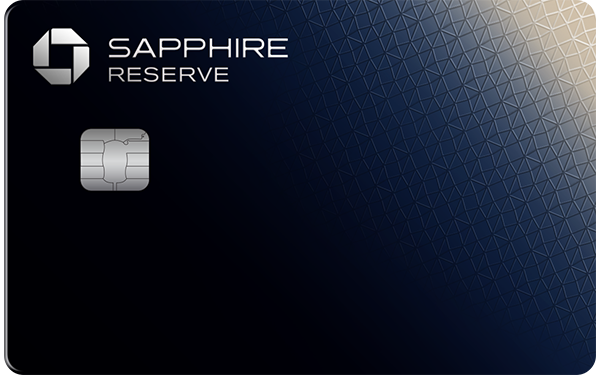
Chase Sapphire Reserve® Card
-

Chase Sapphire Preferred® Card
Who Is the Chase Sapphire Reserve Good for?
The Chase Sapphire Reserve is an excellent choice for frequent travelers and diners. It provides generous rewards for spending on travel and dining, along with an assortment of premium travel benefits, such as a sizable annual travel credit, Priority Pass Select access to airport lounges worldwide, and premium travel insurance. It also gives you more value for your points when you use the Chase Ultimate Rewards portal to book travel. Because of this, the card is best for people who travel often, can take full advantage of these rewards and perks, and are willing to pay a higher annual fee for these benefits.
However, the card may not be the best option for those who are hesitant to pay a high annual fee and would prefer to consider other cards with lower fees, even if they provide fewer benefits. It's also worth noting that this card requires a good to excellent credit score, so people with poor credit may have difficulty getting approved. Furthermore, if you prefer cash-back rewards to travel benefits, this card may not be for you because its reward system is heavily focused on travel redemption.
Regardless, it’s always important to compare several cards from different banks to ensure you’re applying for the best premium credit card for your financial situation.
Ready to apply? Start here

Frequently Asked Questions
-
While the Chase Sapphire Reserve isn't too hard to get, it's important to note that the credit card does require applicants to have a good to excellent credit score, usually in the range of 670 to 800. Not only that, the bank may also consider other factors, including your income, your payment history, and how much debt you currently have. Also, this card is marketed toward more affluent customers, so it requires a higher level of financial stability. Moreover, if you already have a Chase credit card, you need to be aware of the issuer’s application rules. For instance, Chase's 5/24 rule states that your application is likely to be rejected if you've applied for five or more personal credit cards from any bank in the previous 24 months. Finally, you must be willing to pay a high annual fee.
-
Yes, the Sapphire Reserve is a high-end credit card. Its strong travel rewards and perks, along with its premium benefits and high annual fee, place it firmly in the luxury credit card category. Cardholders can benefit from features such as a generous point system, particularly for travel and dining expenses, comprehensive travel insurance, Priority Pass Select access to over 1,300 airport lounges worldwide, and an annual $300 travel credit. The card also offers a number of additional advantages, including trip delay reimbursement, insurance for rental cars, and even credits for specific travel-related services. However, these high-end benefits come with a significant annual fee, so it's best for frequent travelers or those who spend a lot of money on travel and dining.
-
While the credit card issuer doesn't publish its credit limits, the Chase Sapphire Reserve typically provides a higher limit than many other credit cards. The base credit limit for this card is frequently $10,000, indicating Chase expects cardholders to manage higher levels of spending and repayment. Nevertheless, a number of factors, including your credit history, income, debt-to-income ratio, and overall financial situation, can have a significant impact on the precise credit limit given. It's also important to remember that good credit habits, like paying bills on time and keeping your credit usage rate low, could lead to an increase in your credit limit over time.
-
To get the most out of your Chase Sapphire Reserve, you must use its travel and dining rewards program.
-Use the card for all travel and dining expenses to earn three points per dollar and also taking advantage of the $300 annual travel credit.
-When possible, book travel through Chase's Ultimate Rewards portal, where points are worth 50% more.
-Use your free Priority Pass Select membership to make traveling more comfortable, and always pay for your travel with the card to take advantage of the various insurance options it provides.
-When booking business or first-class travel, think about transferring your points to Chase's airline or hotel partners to potentially receive a higher value.
-Finally, make use of the partner benefits offered by DoorDash and Lyft. You can get the most out of your Chase Sapphire Reserve by carefully using its perks and rewards. -
Yes, the Chase Sapphire Reserve credit card is a metal card. You don't have to ask for a metal card in particular when you apply. Chase always issues the Sapphire Reserve as a metal card. Your new metal card will be mailed to you once your application has been approved.
-
Being denied the Chase Sapphire Reserve credit card could be due to various factors. Among the most common reasons is having a low credit score or a high debt-to-income ratio, which may indicate to the lender that you will struggle to manage additional credit.
Additionally, Chase has a policy known as the "5/24 rule," which states that your application will likely be rejected if you have opened five or more credit card accounts in the previous 24 months with any issuer, not just Chase. Finally, insufficient income or a history of late payments could result in a denial. It's important to remember that if your request is rejected, you can call Chase's reconsideration line and provide additional details or context in an effort to have the decision overturned.


